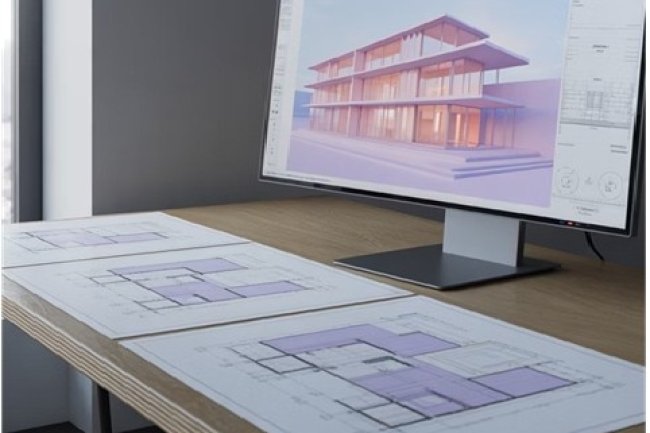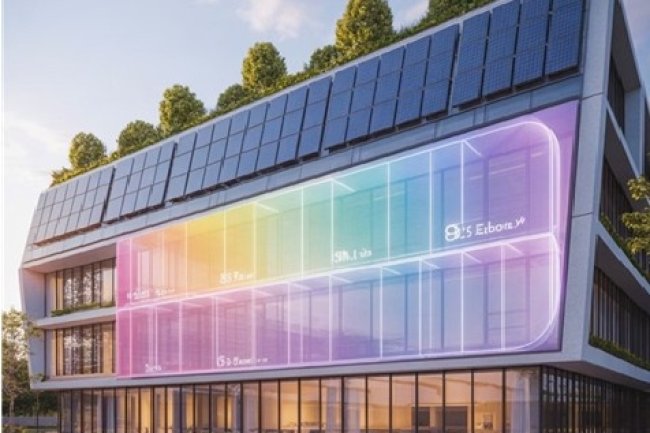Generative Design Meets BIM: Automating Design Iterations
Welcome to a journey where technology meets creativity in the world of architecture, engineering, and construction. Today, we explore how generative design and Building Information Modeling (BIM) are merging to revolutionize the way we plan and build smarter, more efficient structures.

Understanding Generative Design
| Generative design represents a revolutionary shift in how we approach architectural and engineering challenges. Unlike traditional methods where designers create a solution directly, generative design uses algorithms to explore thousands of design possibilities based on your specific constraints and goals. Think of it as having a tireless assistant who can quickly draft countless options for you to consider, each optimized for your project requirements like structural integrity, material efficiency, energy performance, and spatial organization. Generative design algorithms can produce hundreds of design options in minutes, each meeting your specified parameters while offering unique approaches to solving design problems. |
|
Automating Design Iterations
|
|
One of the most powerful benefits of combining generative design with BIM is the automation of design iterations. In traditional workflows, creating and evaluating multiple design options is time-consuming and often limited by available resources. With generative BIM processes, computers handle the heavy lifting of creating variations, freeing designers to focus on evaluating options and making informed decisions. This shift fundamentally changes the design process from "create then evaluate" to "define goals then select from optimized options." For example, a commercial building design might generate dozens of façade options, each optimized for different combinations of cost, solar gain, and aesthetic appeal — all within hours instead of weeks. |
The Power of BIM Integration
Building Information Modeling (BIM) has already transformed how we design, visualize, and coordinate building projects. When combined with generative design, the possibilities expand dramatically.
Implementation Challenges
While the benefits are compelling, implementing generative design with BIM does come with challenges. Here's what you should consider as you explore this technology:
|
1. Technical Requirements
Generative design algorithms often require significant computing power and specialized software knowledge. Cloud computing solutions can help address the processing needs, but firms still need team members with the right technical skills.
|
2. Learning Curve
Design teams need to learn to think in terms of goals and constraints rather than direct solutions. This represents a significant mindset shift for many designers accustomed to traditional approaches.
|
3. Integration with Workflows
Incorporating generative design requires rethinking existing processes and establishing new workflows that allow for iteration and evaluation of multiple design options throughout the project lifecycle.
|
How Consac Can Help
At Consac, we understand the challenges of implementing new technologies in established design workflows. Our team specializes in bridging the gap between advanced generative design capabilities and practical BIM implementation.
We offer customized training programs, workflow consulting, and technical support to help architectural and engineering firms embrace the power of generative design without disrupting their existing projects. Our step-by-step implementation approach ensures your team can gradually build skills while delivering immediate value to clients through more innovative, optimized design solutions.
-
Tailored Training
Customized to your firm's specific needs and existing BIM expertise -
Technical Support
Ongoing assistance as you implement generative design on real projects -
Workflow Integration
Practical strategies to incorporate generative tools into your existing processes
The Future of Design Automation
|
As we look ahead, the integration of generative design and BIM will continue to evolve, bringing even more powerful capabilities to architects, engineers, and builders. Machine learning algorithms will increasingly understand design intent, helping to generate not just options but insights that inform better decision-making. The most successful firms will be those that embrace these technologies not as replacements for human creativity, but as tools that expand what's possible. By automating routine tasks and design iterations, we free up human designers to focus on the aspects of design that truly require our unique perspective and creativity. |
|
Ready to explore how generative design can transform your BIM workflow?
Let’s start the conversation today...
What's Your Reaction?



















